Cleaning and maintaining outdoor furniture covers involve initial removal of surface debris like leaves or twigs, followed by a gentle washing using a thorough detergent mixed with warm water. This process should adhere strictly to the instructions stipulated on the product label or as recommended by the manufacturer. Stubborn stains might require specific treatments such as bleach solution for mildew or a baking soda mix for rust and bird droppings. The covers must be rinsed thoroughly, ideally with a garden hose, then air-dried completely, preferably in sunlight.
Regular inspection for signs of wear and tear and a dry, ventilated storage environment can help to extend the life and performance of the covers. By taking a closer look at this process, you will be equipped with detailed techniques to bolster your furniture cover's durability and appearance.
Preparing for Furniture Cover Cleaning
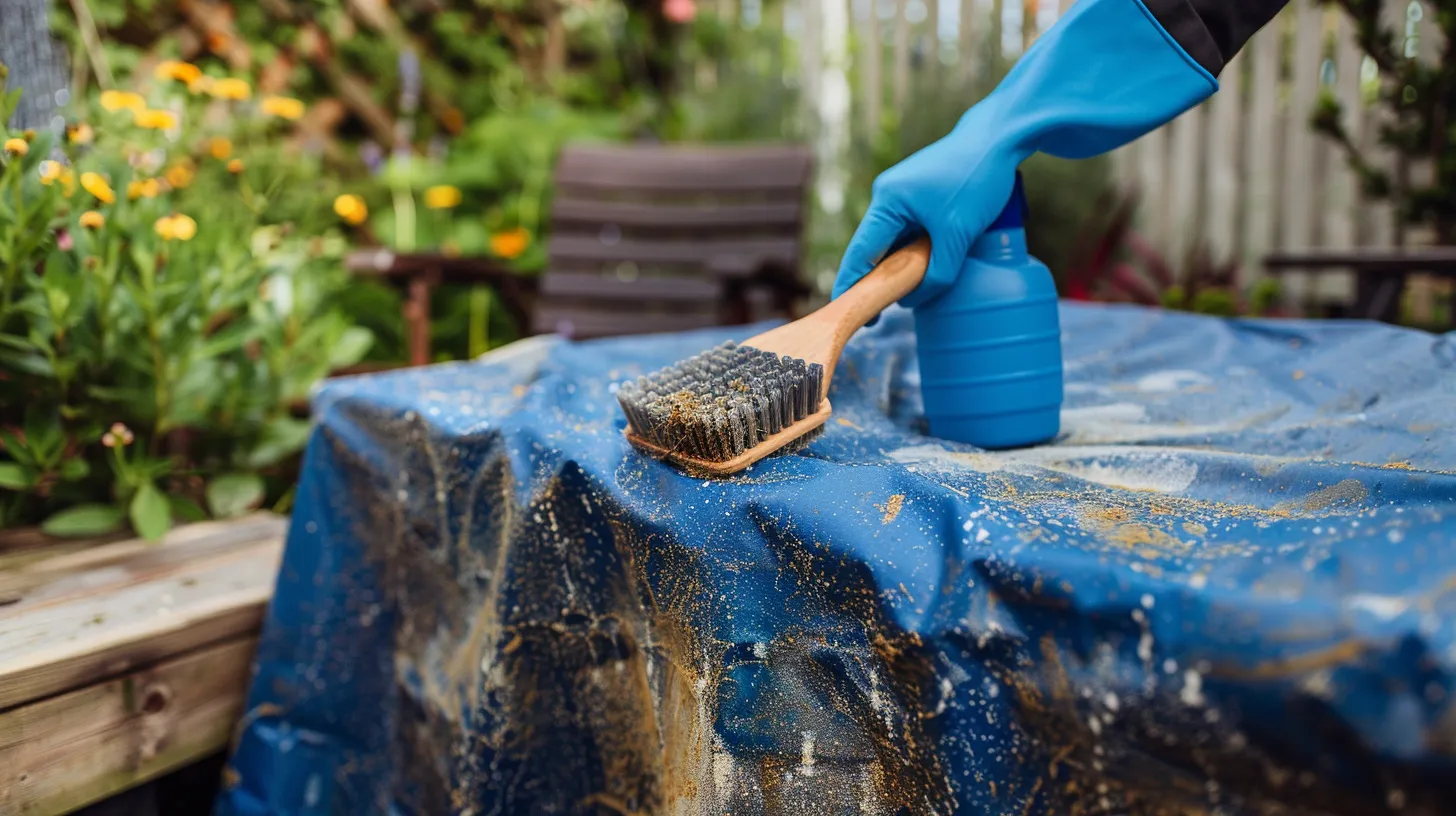
In the first step of preparing for furniture cover cleaning, it's important to carefully inspect your outdoor furniture covers for any debris such as leaves or twigs. A soft brush should be used to gently brush off surface dirt. This preliminary step is essential to prevent scratches or other damage that can occur if debris is rubbed into the material during cleaning.
Moreover, the cleaning instructions on the label should be read carefully. The manufacturer often provides specific guidelines on how to clean your furniture cover effectively without causing any potential harm. This can include recommendations on the type of detergent to use, the temperature of the water, and other special care instructions.
A mild detergent mixed with warm water is typically a safe choice for most outdoor furniture covers. However, depending on the material of the cover, special care might be needed to ensure ideal cleaning results. For instance, certain materials may be sensitive to certain types of detergents, or require a specific cleaning method. If you are unsure, it's best to follow the instructions provided on the label to avoid potential damage to your furniture covers.
Cleaning Different Cover Materials
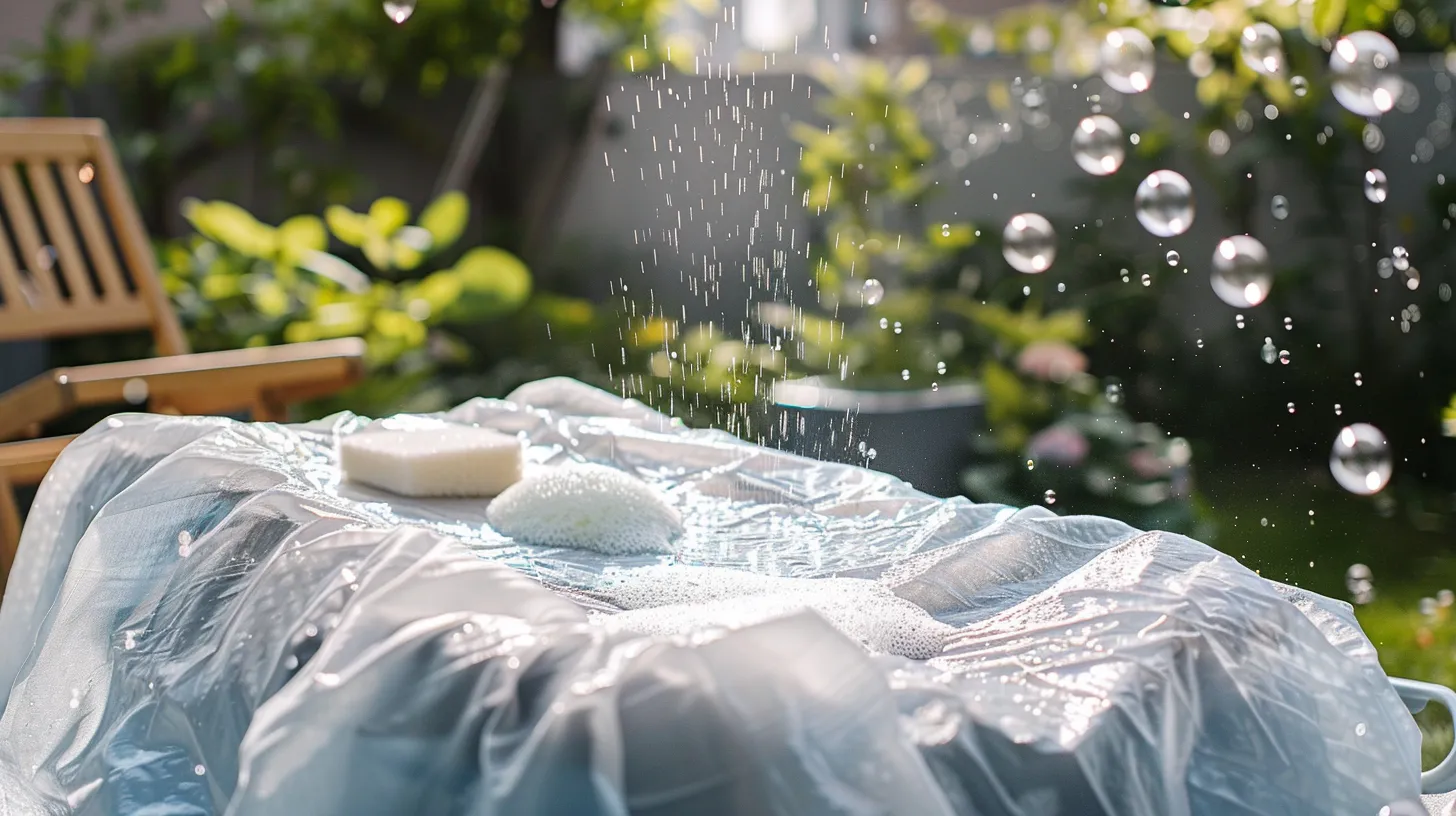
Understanding how to clean different cover materials is essential for maintaining the durability and aesthetics of your outdoor furniture covers. When it comes to vinyl and polyester covers, gentle cleaning is vital . Use a mild soap solution to clean patio furniture covers made from these materials, ensuring to rinse thoroughly. A soft brush can be used to tackle any tougher spots, followed by a rinse to remove soap residue. This care and attention help maintain the durability and appearance of your outdoor cushion covers.
For nylon covers, a similar approach to vinyl and polyester is recommended, using mild soap and water for cleaning. Even in the case of plastic and aluminum outdoor furniture covers, a mild soap solution will do the job. It's important to rinse these materials well and allow them to dry completely before storage. This will prevent any potential damage or wear.
Regular cleaning and maintenance of your outdoor furniture covers, regardless of their material, will help extend their lifespan . By understanding how to clean different cover materials, you'll protect your outdoor furniture effectively, keeping it in top condition for longer.
Addressing Tough Stains
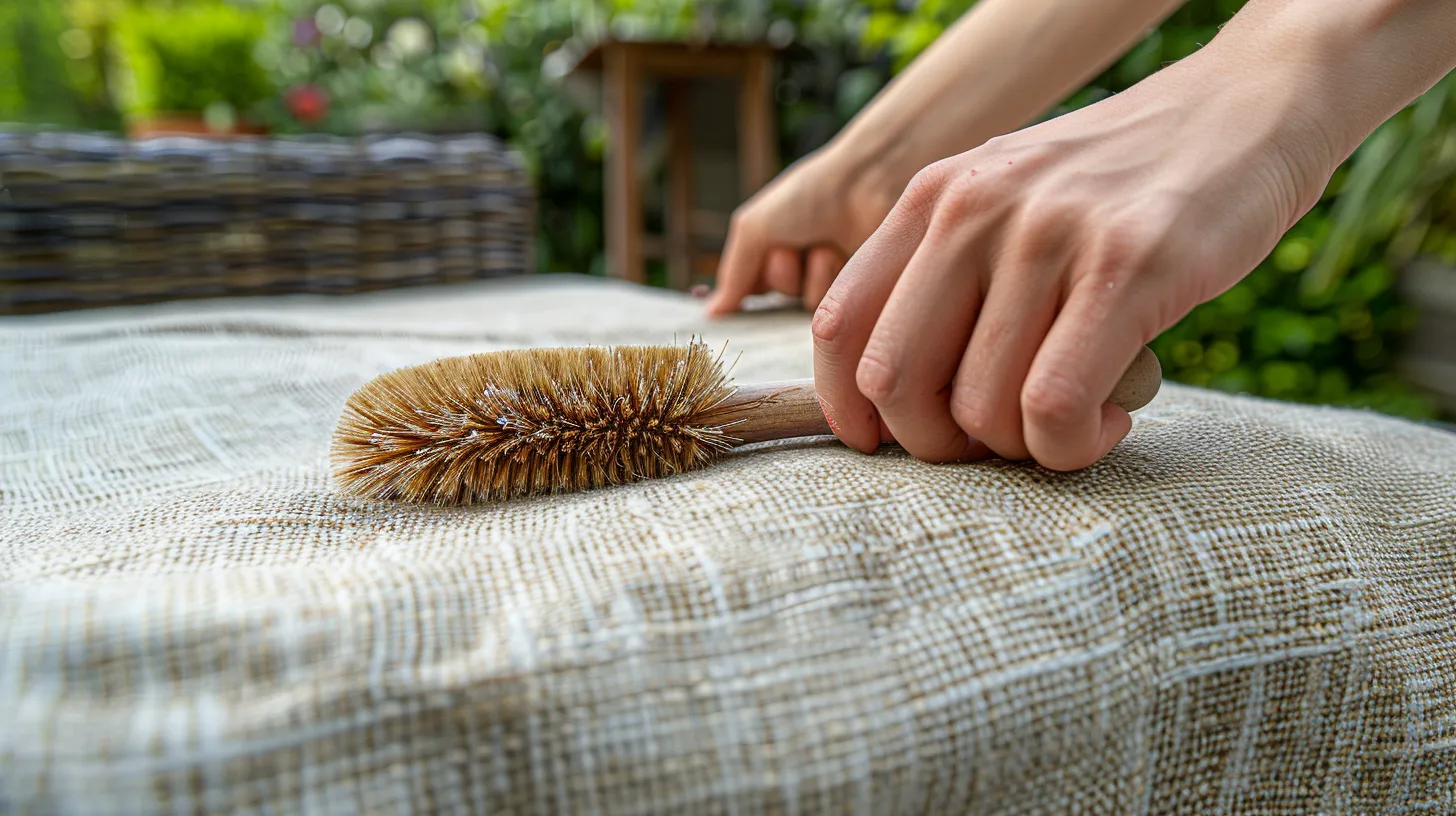
Addressing tough stains on outdoor furniture covers is an important part of their maintenance, requiring specific treatment for different types of marks . Different cleaning solutions are needed to tackle a variety of tough stains, from mildew to sunscreen marks, and even bird droppings.
For stains caused by mildew, a bleach solution can be highly effective. This cleaning agent works by breaking down the mold structure, thereby eliminating the stains. Rust removal is another common issue with outdoor furniture covers. Here, a baking soda mix can be used to gently scrub away the rust stains.
When it comes to bird droppings, a similar approach with a baking soda mix can be applied. This mixture helps to break down the remains, making it easier to wipe off. Grass stains and sunscreen marks , on the other hand, might require specialized stain removers . These products are designed to penetrate the fabric and dissolve the stain, allowing for a thorough cleaning.
Addressing these tough stains promptly not only helps to maintain the appearance of your outdoor furniture covers but also to prolong their lifespan. By doing so, you can keep your covers looking new and fresh for longer, enhancing the overall aesthetic of your outdoor space.
Rinsing and Drying Procedures
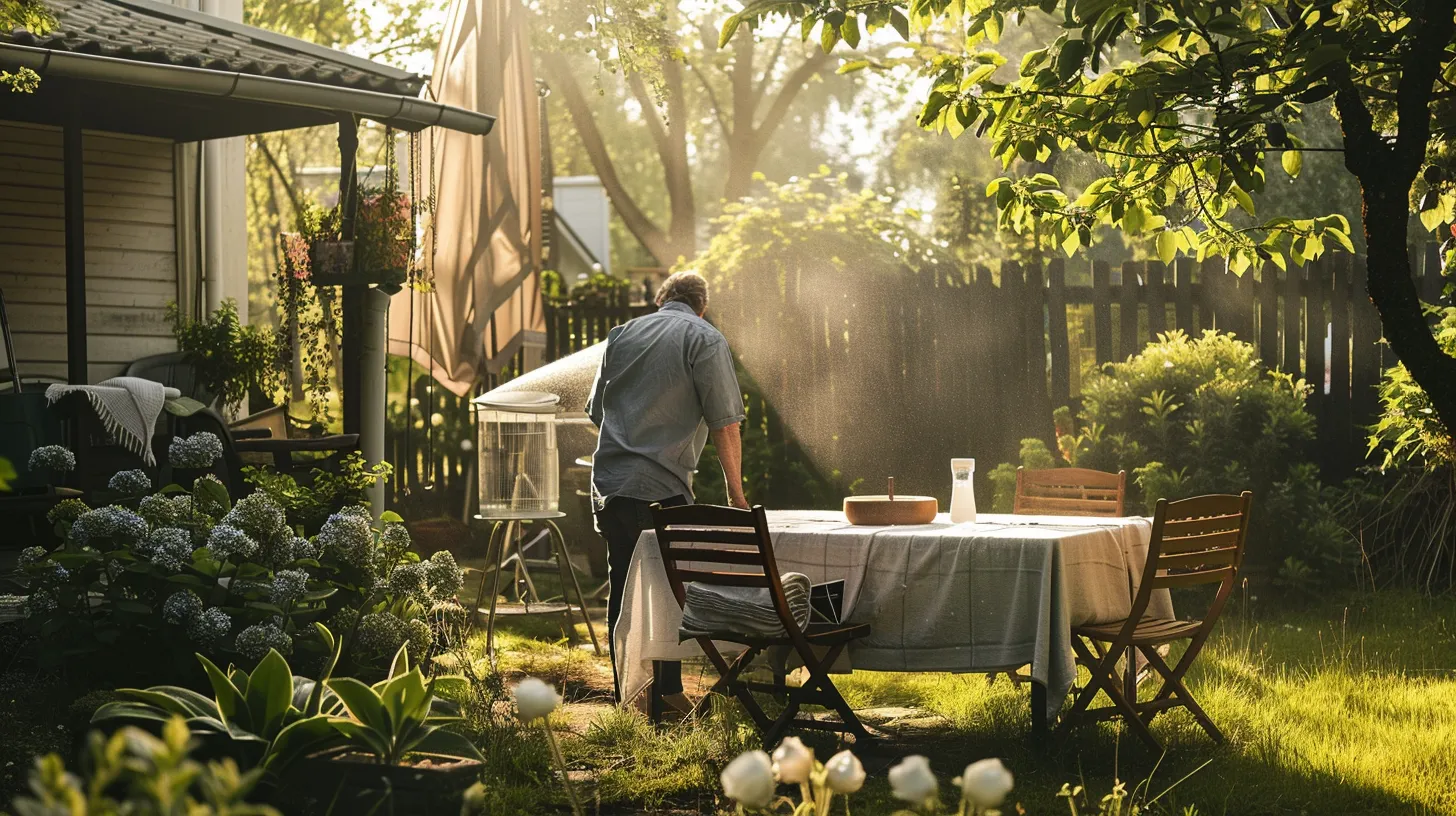
Having successfully dealt with the tough stains on your outdoor furniture covers, the next step involves proper rinsing and drying procedures to guarantee their longevity and continued aesthetic appeal.
Start by rinsing the covers thoroughly with a garden hose. This step is essential to remove any soap residue left after cleaning. If any solution remains, wipe it away to prevent streaking or discoloration.
Once the covers are thoroughly rinsed, the next stage is drying. Allow the covers to air dry, ideally in sunlight. The sunlight works as a natural disinfectant and helps prevent mold or mildew growth. To optimize the drying process, it's recommended to position the covers where there is good airflow. This ensures a quicker drying time and that the covers dry completely.
It's imperative to make sure the covers are completely dry before storage. Storing the covers while they are still damp can lead to musty odors and possibly damage the fabric. This is why it's critical to allow for complete drying before you store your covers.
Following these rinsing and drying procedures not only maintain the aesthetic appeal of your covers but also extends their lifespan.
Continued Cover Care and Maintenance
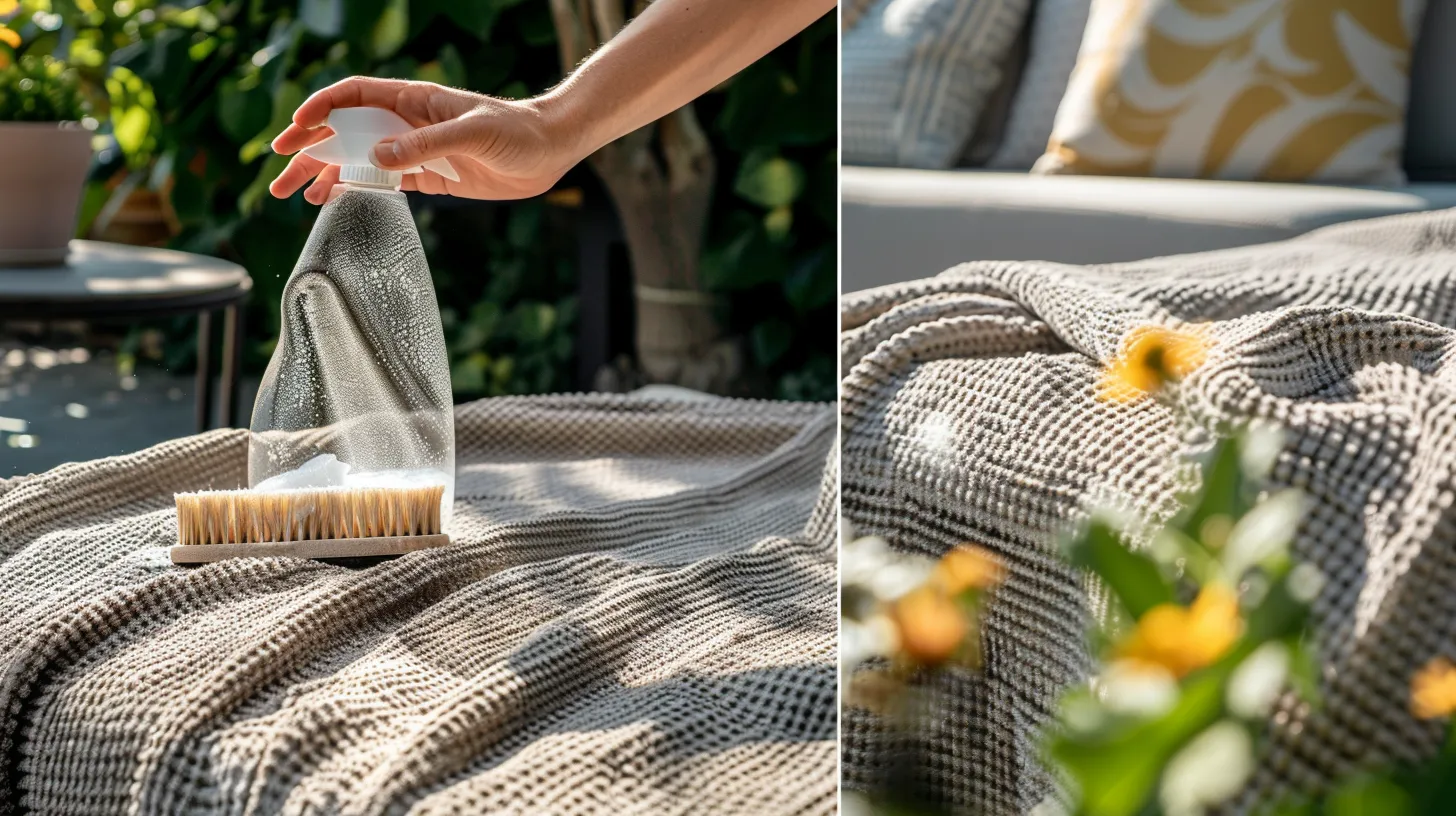
In the domain of outdoor furniture preservation, consistent vigilance and meticulous maintenance are key strategies to prolong the durability and sustain the visual appeal of your covers. As part of this process, it is essential to regularly inspect your outdoor furniture covers for signs of wear and tear. Addressing small damages promptly can prevent further deterioration and extend the lifespan of the covers.
Storing your covers properly is another critical aspect of maintenance. When not in use, store your covers in a dry, ventilated area to prevent moisture buildup . This will help to prevent mold growth, which can damage the material and mar the appearance of the covers. Avoid folding the covers when they are wet or damp, as this can also encourage mold growth and cause damage.
Following the manufacturer's instructions for care and maintenance is also crucial. These guidelines are designed to make sure that the covers are cleaned and maintained in a way that preserves their appearance and extends their lifespan. With proper maintenance , your outdoor furniture covers can continue to add beauty and comfort to your outdoor living spaces for many years to come.










